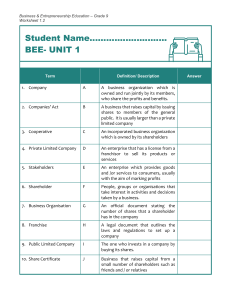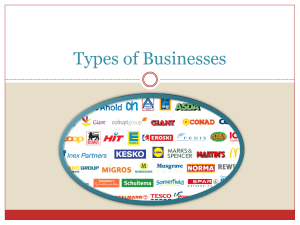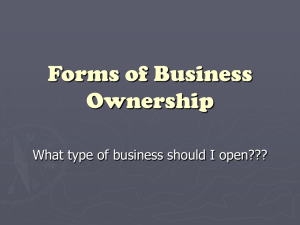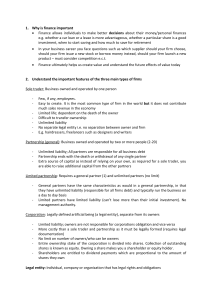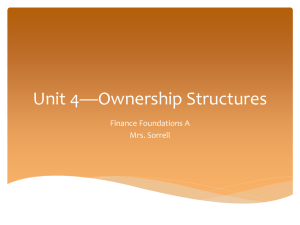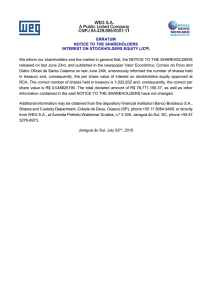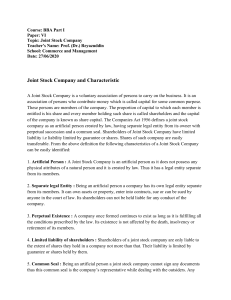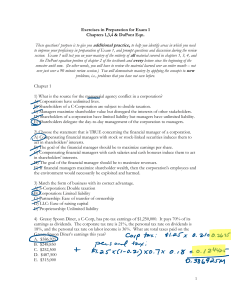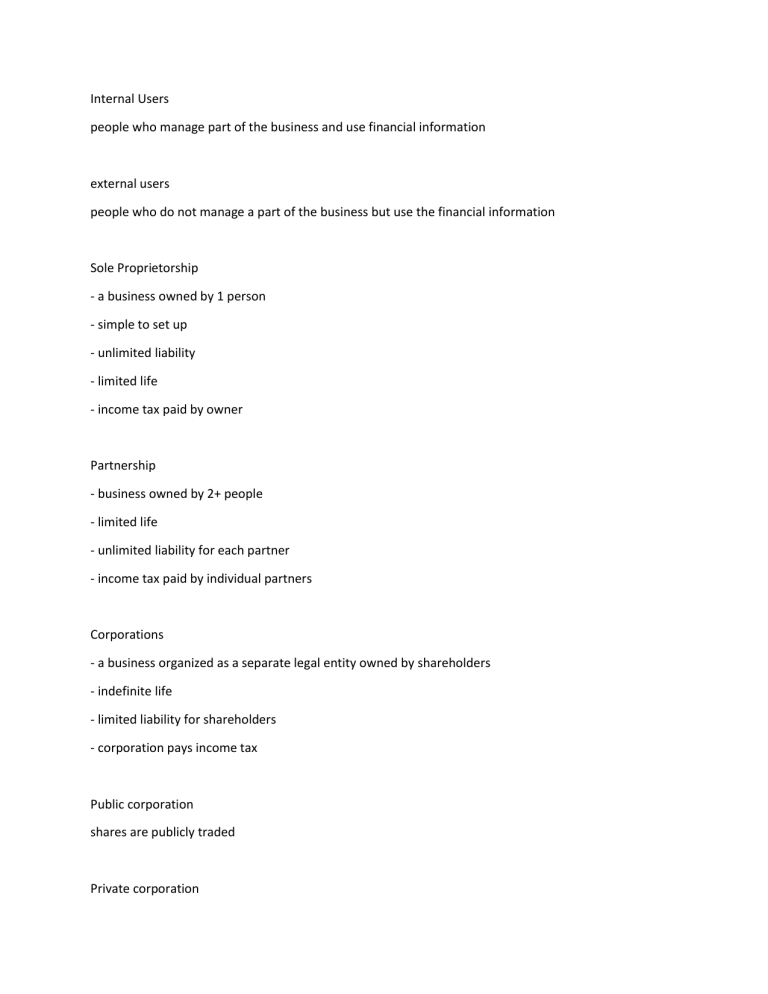
Internal Users people who manage part of the business and use financial information external users people who do not manage a part of the business but use the financial information Sole Proprietorship - a business owned by 1 person - simple to set up - unlimited liability - limited life - income tax paid by owner Partnership - business owned by 2+ people - limited life - unlimited liability for each partner - income tax paid by individual partners Corporations - a business organized as a separate legal entity owned by shareholders - indefinite life - limited liability for shareholders - corporation pays income tax Public corporation shares are publicly traded Private corporation shares are not available to general public Financing Activities obtaining funds to finance operations, forms of debt Investing Activities purchase or sale of long-lived assets needed to operate the company like property and equipment Operating activities main day to day activities of the business like revenues and expenses common shares amount paid by investors for shares of ownership in a company shareholders Investors who purchase shares orstock in a corporation. dividends Payments that distribute a portion of income to shareholders and are normally in the form of cash Liabilities debts and other obligations assets resources that a company owns or controls Long-Lived Assets Are tangible and intangible resources owned by a business and used in its operations over several years like computers, equipment, goodwill and intangible assets goodwill when a company acquires another company, paying a price that is higher than the value of the purchased company's net identifiable assets intangible assets assets that do not have any physical substance themselves but represent a privilege or a right granted to, or held by, a company like copyrights and patents income also known as revenue, increase in economic benefits that result from the normal operating activities of a business, such as the sale of a product or provision of a service Accounts Receivable Amounts to be received in the future due to the sale of goods or services Accounts Payable Amounts to be paid in the future for goods or services already acquired
